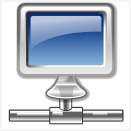
- The all new Mac Pro. Quite impressive indeed. Get up to two 3 GHz Xeons along with 2 TB in storage.
- Cheaper (along with slightly improved specs) Cinema Displays
- An Intel Xserve. Two 2.66GHz or 3GHz Dual-Core Intel Xeon 5100 processors, up to 2 TB (!) of storage.
Anyone bought/buying one? Or 10?
- Read more...
- 2 comments
- 2,160 views







